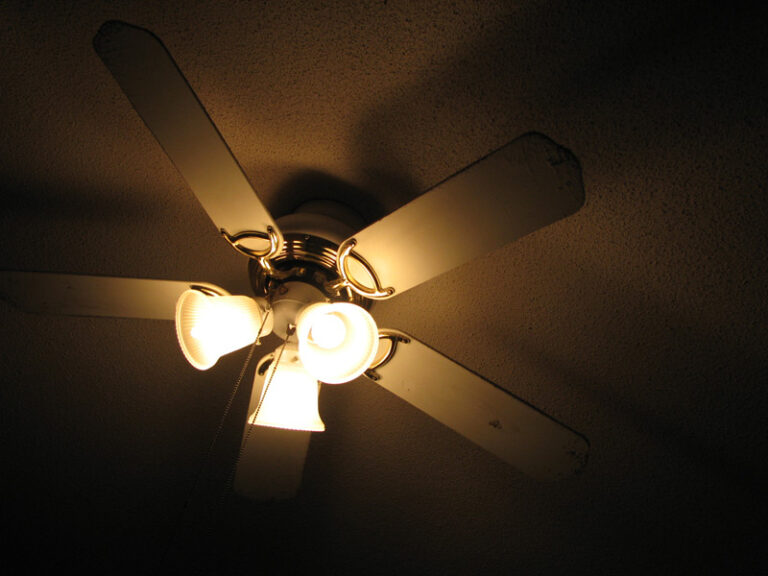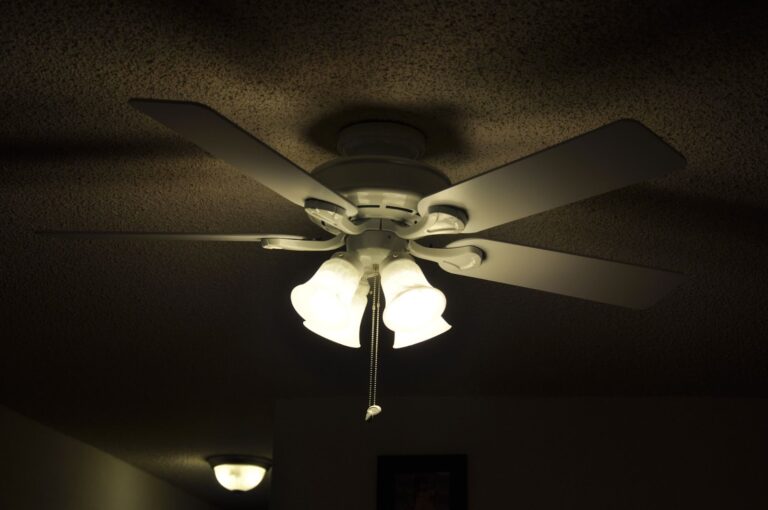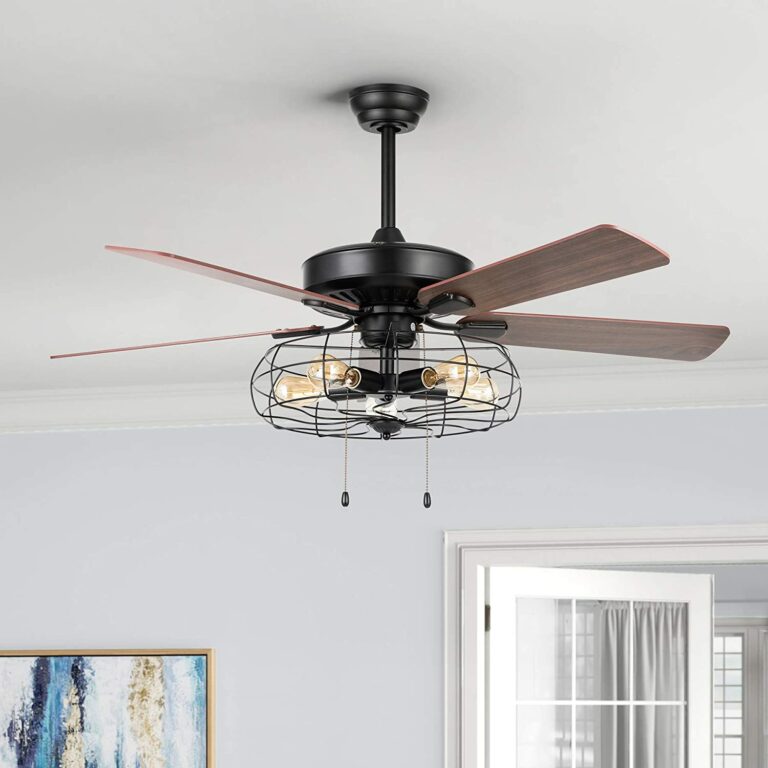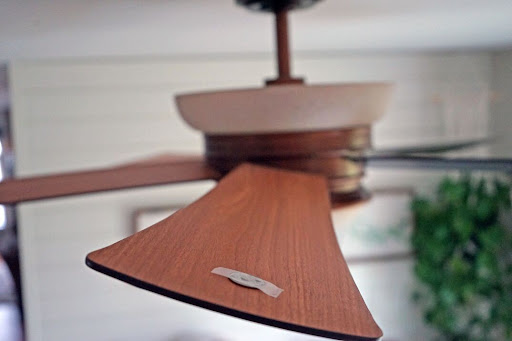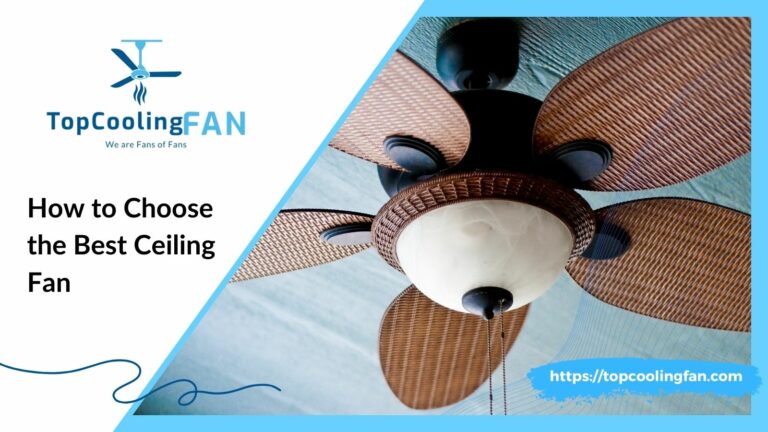How to Choose the Best Ceiling Fans with Remote – Size, Blades & Airflow
Ceiling fans were invented approximately 20 years before the air conditioner. Nowadays, we have them in all shapes and forms, and let’s face it—they are back in fashion!
Aside from the fact that your AC can finally take a break, ceiling fans are a stylish addition to your home if chosen right. They do not make a room cooler or warmer; they push the air all over and provide proper airflow.
A remote-controlled ceiling fan is always the best choice. These fans are innovative, wireless gadgets that can be controlled remotely.
In this article, we will share some tips and tricks about how to choose the best ceiling fans with a remote.
Choose the Location

Even the best ceiling fan in the world would not look good if your location isn’t right. Ceiling fans are more functional if placed in a crowded place, for example, the living room or the home office.
If you put one in an empty room, it would waste both money and energy. The goal of every fan is to move the air around the room and create a pleasant breezy atmosphere.
Another good place to put a ceiling fan is an outdoor living area. An outdoor ceiling fan will be a perfect addition on hot summer nights if you have a lovely patio.
What Size of Ceiling Fan Do I Need?
When choosing the fan size, you should always consider the size of the place where you intend to place it.
If the ceiling fan is not the proper size, it will not provide good airflow; therefore, its function will be close to nothing.
Here is the map for choosing the perfect ceiling fan size corresponding to the square footage of the area:
- If the area is less than 55 sq. ft. – the fan size should be 30’’ or less.
- If the area is up to 100 sq. ft. – the fan size should be around 43.’’
- If the site is up to 200 sq. ft. – the fan size should be about 53.’’
Finally, when looking for a perfectly sized fan, make sure you leave a minimum of 20’’ of free area around the ceiling fan.
Pick the Right Height
A ceiling fan should be placed at least 8 feet off the floor to optimize circulation according to the building codes.
A general rule is that the more space between the ceiling and the fan blades, the better the airflow.
For low ceilings below 7 feet, choose a flush mount ceiling fan. The flush mount fans are practically attached to the top, and their design does not include downrods.
If you have a high ceiling, it is better to choose a fan that uses a downrod. This way, you get to set your preferred height.
Picking Ceiling Fan Blades
Modern ceiling fans come with a minimum of 2 and a maximum of 9 blades.
Though it is an important part of picking a ceiling fan, it is more about personal preference than function.
The number of blades indicated the fan’s efficiency back in the day. However, that is not the case anymore. Modern fans are built with CFM technology. This technology measures the airflow efficiency of a fan, so it is not affected by the number of blades.
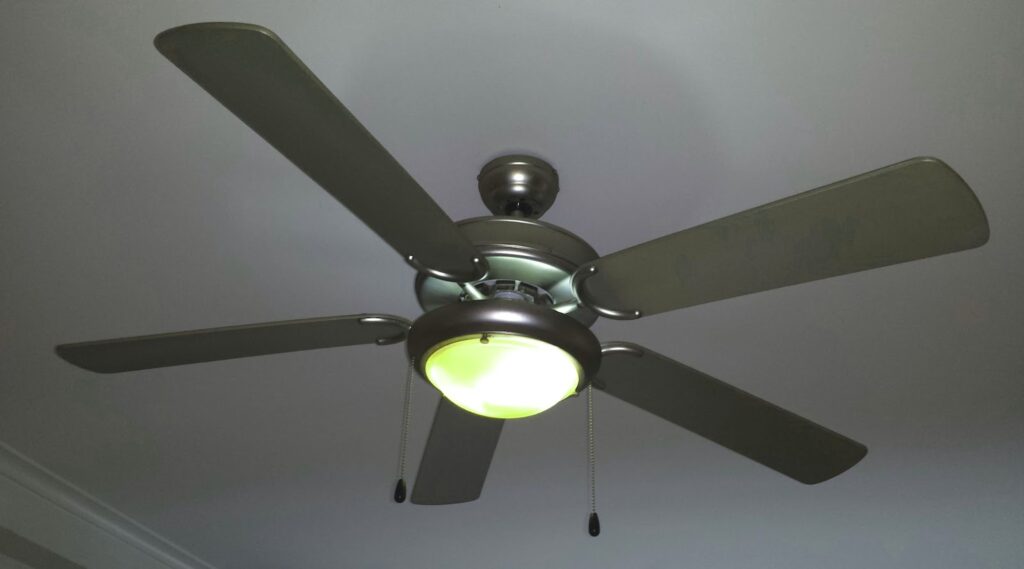
If you admire a traditional, old-fashioned look, buy a fan with 4 or 5 blades and if you prefer the modern, sleek look, go for a fan with only 2 or 3 blades.
Contrary to the number, the fan blade material plays a vital role in the duration and function of the fan.
Medium-density fiberboard or MDF blades are used on the cheapest ceiling fans, and they are not very functional for outdoor spaces. Also, after a little while, they will start to bend because of the moisture.
Most fans use ABS plastic blades. These blades will function well in both outdoor and indoor spaces.
CFM and Airflow
The amount of air a fan distributes is called airflow. The airflow is measured in CFM, which means ‘cubic feet per minute.’
A high CFM number indicates that the fan is very effective and distributes much air in the space. The minimum number of CFM you need for your ceiling fan is 75.
Many modern fans come with a high number of CFM and reversible motors. These features allow owners to shift the direction of the spinning blades in seconds.
Best Ceiling Fans with Remote Control
Now that we have shared some knowledge about how ceiling fans work, we will present our list of the top 3 best ceiling fans with remotes.
1. Warmiplanet Remote Control Ceiling Fan
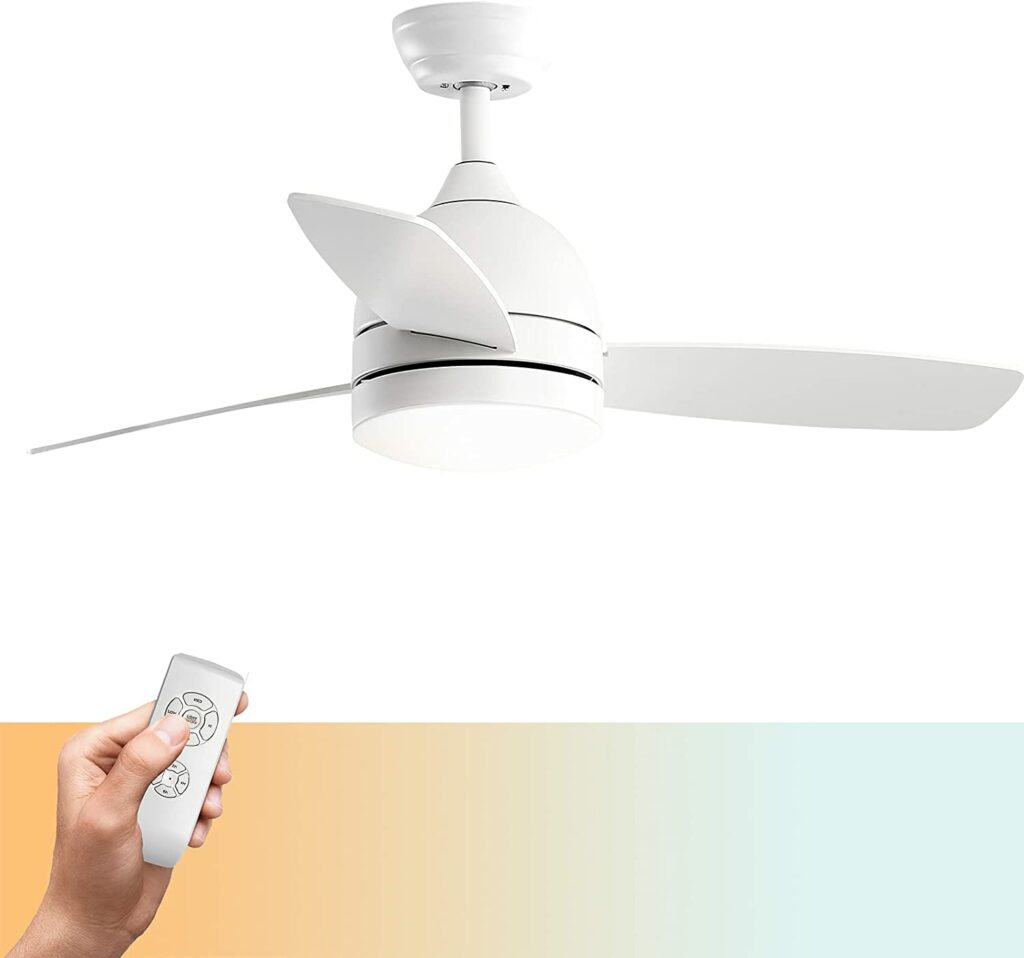
This LED ceiling fan is the ultimate intelligent fan you need to have in your home!
It offers many different features like changing the speed and time of the spins. Also, the fan comes with lightning features that allow you to choose between various color temperatures.
The best part is that the Warmiplanet is completely soundless!
2. Honeywell Remote Control Ceiling Fan
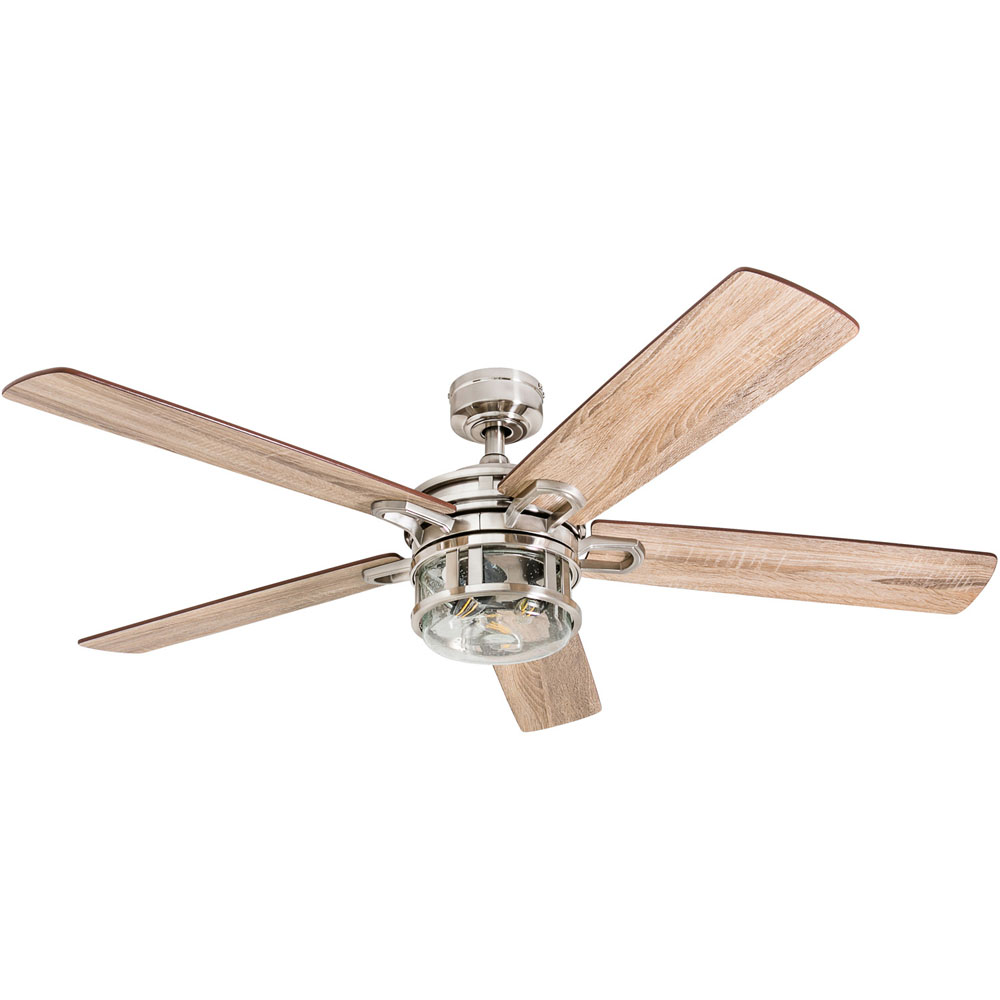
The runner-up is this incredible electric remote-controlled ceiling fan with an oil-rubbed bronze finish.
It has 3 speed settings and offers a smart sync option to control the brightness via the remote. The blades of this fan have 2 finishes, ironwood, and cimarron.
The Honeywell Remote Fan has a reversible motor which means you can quickly change the rotation of warm air in winters.
3. Hunter Remote Control Ceiling Fan
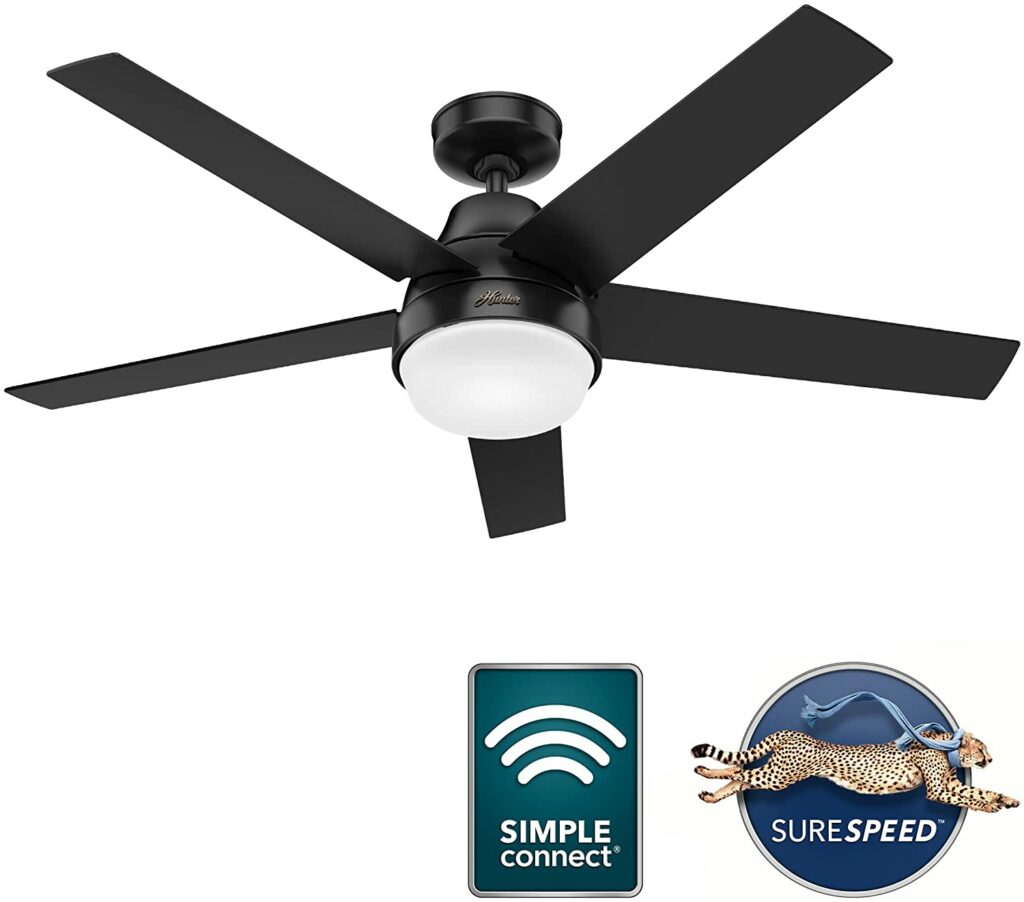
The Hunter Remote is the perfect energy star if you want to light up your room with energy-efficient LED bulbs.
It fits perfectly in medium to large rooms. Plus, it features a reversible multi-speed motor that allows you dynamic airflow through all seasons.
Conclusion
Having the best ceiling fan is not always about design and fashion. The modern remote-controlled LED fans offer both function and style with energy efficiency.
A reversible motor is an essential feature when choosing a ceiling fan, especially when we are talking about remote control ceiling fans. It enables you to shift the direction of the blades while they are spinning.
Bring the ultimate technology directly to your living room with the best ceiling fan with remote and LED lights!

